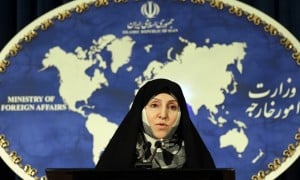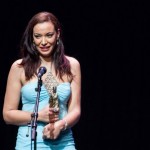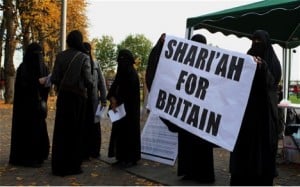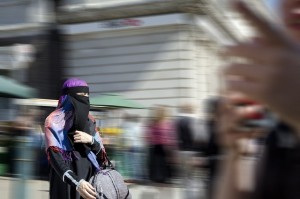This post was written by guest contributor Maria Salman.
Defiance. In light of a recent landmark election, this is the one word dominating the media’s rhetoric on the civic engagement of Pakistani women. On May 11, scores of Pakistanis came out to exercise their right to vote – many for the first time in their lives. As the world apprehensively eyes a crucial geopolitical region against the backdrop of what was once called the War on Terror, it was inevitable perhaps that when the focus was on Pakistani women, they were depicted as caught between competing forces of modernity and tradition as they took to the polls or ran as candidates.
An overview of media coverage on the topic of women and the Pakistani election reveal the obstacles inhibiting women from active participation in the election. These include: threats from the Taliban, frequent bomb blasts targeting polling stations, voter intimidation, long lines in sweltering heat and the failure of law enforcement to provide adequate security. Many news outlets profiled women, who were involved in campaigns or running for a position (here, here, here and here). Interestingly, almost of all of these profiles were of women originating from the North West tribal regions of Pakistan, which are notorious for their high profile reputation of being home to the Pakistani Taliban. The articles framed these women as incredibly courageous in their fight for empowerment and pitted them against the evils of patriarchal misogyny embodied in the obligatory mention of Taliban death threats.
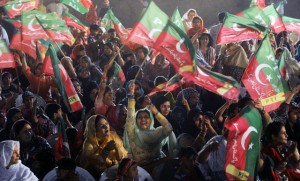
In particular, aside from mainstream news outlets providing coverage of the election, popular feminist blogs such as The Frisky and Jezebel went beyond their celebrity gossip, fashion and relationship advice taglines to pick up the story. Both websites emphasized Mateela, one of the small villages where men came under a joint agreement to not allow women to vote since it went against ‘local tradition’. Another focus was on the threat of sexual harassment near polling stations, which was one of the primary reasons given by the village male elders for their decision. However, these factors did not stop a significant and unprecedented number of Pakistani women who came forward to exercise their right to vote and engage in the elections as candidates.
At first glance, there doesn’t seem to be anything wrong with showcasing the real struggles of Pakistani women participating in elections. However, while it is encouraging to see news coverage of women in Pakistan as agents of change, it is important to critically examine why and how the media frames the factors influencing their decisions and actions, given the not-so stellar reputation of most media (particularly mainstream Western media) in accurately looking at Muslim women’s denial or violation of rights.
The common thread tying these articles together is an image. It is an image that has gained considerable traction in the past couple of years and can be summed up in one individual: Malala Yousafzai. She is the ultimate icon of the defiant Muslim woman who bravely challenges the authority of oppressive Muslim men (For more on this image, see MMW writer Emaan’s excellent analysis).
This emerging image fails to cover all levels of marginalization and disempowerment experienced by Pakistani women. It perpetuates a rather simplistic understanding of what motivates these women to enact positive change. The problem, here, is the construction of religion as a source of oppression and ignoring other equally if not more vital factors contributing to the rise of Pakistani women in elevating their social, economic and political status. By zeroing in on ‘ultra conservative’, ‘tribal’, ‘fundamentalist Islamic’ attitudes of Pakistani culture that confine women to the domestic sphere, the media is quite successful in detracting attention away from a complex web of influences: chronic poverty, uneven access to water or electricity, high unemployment rates, poor health care provision, lack of education, corruption, and insecurity.
Why do these factors fail to illicit the same level of righteous outrage as traditional culture? Often, it is the toxic mix of this set of factors that promotes the violation of women’s rights in Pakistan, which is unfairly packaged by the media as an authentic expression of culture. Of course, this type of superficial attention to the welfare of Pakistani women serves as a justification for the War on Terror. The main point is that Pakistani women are not solely motivated by a need to defy tradition but by a need to see a marked improvement in all aspects of their lives, as suggested by this Guardian article.
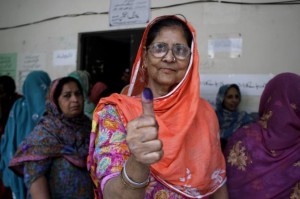
Unpacking the discourse of tradition versus human rights prevalent in these media depictions reveals another problematic assumption: the lumping of rural/urban, poor/middle class/rich, and feudal/non-feudal Pakistani women as one homogenous group experiencing the same forms of disempowerment at a consistent level. Often, the articles mention the struggles of prominent female politicians such as Benazir Bhutto and Hina Rabbani Khar but they do not elaborate on the privilege enjoyed by these elite women in being able to access Pakistan’s political system. The ruling feudal (land-owning) class derives its wealth and power on the backs of subordinate classes, placing the majority of Pakistani women at an utter and deep disadvantage. Gender equality in Pakistan cannot be achieved if these contradictions are not realized.
But all is not lost. There is an undeniable surge in Pakistani women becoming agents of change on their own terms, in their own rights. The positive informative gem gleaned from this media narrative is the revitalization of the civic spirit of women in Pakistan. Ever hopeful amidst chaos, the resilience apparent in these stories is truly remarkable and a testament to the strength of human nature in withstanding adversity.


